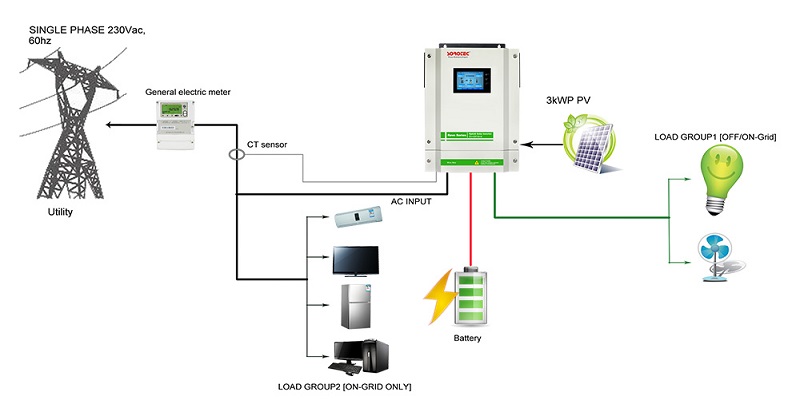Solar photovoltaic power generation has many unique advantages:
1. Solar energy is an inexhaustible and inexhaustible clean energy, and solar photovoltaic power generation is safe and reliable, and will not be affected by the energy crisis and unstable factors in the fuel market.
2. The sun shines on the earth and solar energy is available everywhere. Solar photovoltaic power generation is especially suitable for remote areas without electricity, and it will reduce the construction of long-distance power grids and power loss on transmission lines.
3. The production of solar energy does not require fuel, which greatly reduces operating costs.
4. In addition to the tracking type, solar photovoltaic power generation has no moving parts, so it is not easy to be damaged, relatively easy to install, and simple to maintain.
5. Solar photovoltaic power generation will not produce any waste, and will not produce noise, greenhouses and toxic gases. It is an ideal clean energy. The installation of 1KW photovoltaic power generation system can reduce the emission of CO2600~2300kg, NOx16kg, SOx9kg and other particles 0.6kg every year.
6. The roof and walls of the building can be effectively used without occupying a large amount of land, and solar power panels can directly absorb solar energy, thereby reducing the temperature of the walls and roof, and reducing the load of indoor air conditioning.
7. The construction period of solar photovoltaic power generation system is short, and the service life of power generation components is long, the power generation method is relatively flexible, and the energy recovery period of the power generation system is short.
8. It is not restricted by the geographical distribution of resources; it can generate electricity near the place where the electricity is used.

What is the principle of solar power generation
Under the sunlight, the electric energy generated by the solar cell element is controlled by the controller to charge the battery or directly supply power to the load when the load demand is met. If the sun is insufficient or at night, the battery is under the control of the controller To supply power to DC loads, for solar power generation systems with AC loads, an inverter needs to be added to convert DC power into AC power.
Solar power generation uses photovoltaic technology that converts solar radiant energy into electrical energy using a square array of solar cells to work. According to the operation mode, solar power can be divided into grid-connected photovoltaic power generation and off-grid photovoltaic power generation.
1. Grid-connected photovoltaic power generation is a photovoltaic power generation system that is connected to the grid and transmits power to the grid. It is an important development direction for photovoltaic power generation to enter the stage of large-scale commercial power generation, and grid-connected photovoltaic solar power plants have become an integral part of the power industry. It is the mainstream trend of photovoltaic power generation technology development in the world today. The grid-connected system is composed of solar cell arrays, system controllers, and grid-connected inverters.
2. Off-grid photovoltaic solar power generation refers to a photovoltaic system that is not connected to the grid for independent power supply. Off-grid photovoltaic solar power plants are mainly used in areas with no electricity and some special places far away from the public grid. The independent system consists of photovoltaic modules, system controllers, battery packs, DC/AC inverters etc.